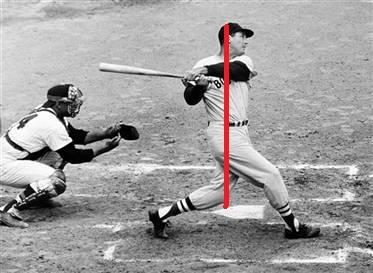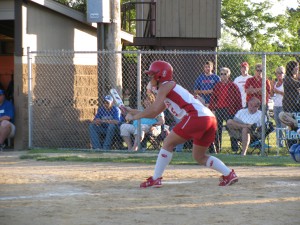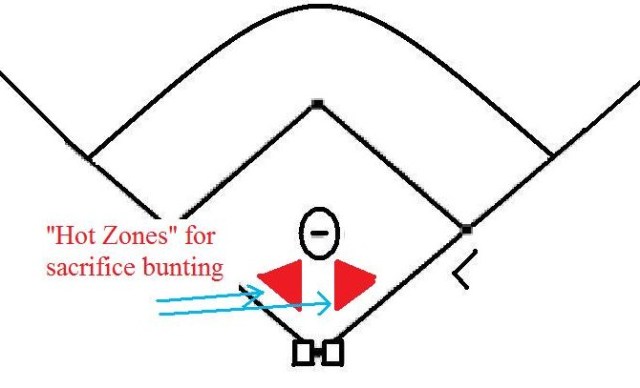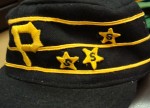By creating a practice plan you give your practice a framework. Putting it on paper gives a coach a few advantages over other coaches that just “keep it upstairs”. Ultimately, the guys that go off the top of their head might as well be dumped on their head because one look at their unorganized practice would make even a bush league team cringe. Some may say, “Big deal, you’re making a list.” Yes, but the list is as detailed as you want it to be. A good practice plan allows a coach to group his players more effectively, manage practice time better, and motivate his/her players more easily.
Baseball and softball are very skill specific sports. Breaking your team up into small groups based on position is essential. For example, if a coach really wants to work on double play pivots with his middle infielders, does the whole team have to be working on this skill? No! The outfielders could be working on their footwork. The catchers, pitchers, and corner infielders could be working on bunt coverage. By separating into groups an hour worth of drill time could be condensed into 20 minutes, thus, leaving more time for other coaching points. The coach without this sort of plan on paper might have the whole team working on pivots. What a waste for the 10 players that may never play 2nd base or shortstop. Even worse, this same coach may have those 10 non-middle infielders just watching.
I am also a big advocate of social grouping at practice. For instance, we break up into 3 to 4 small groups for batting practice. I am the one that determines what players are in which groups. If allow the players to group themselves, they would always end up with the same players based on the buddy system. Thus, they are never building bonds with their other teammates. As well, buddies are more likely to mess around when no one is looking. Of course, my players would never do that. Yeah, right. They sometimes don’t like the fact that I pick the groups, but this is not a democratic process.
Efficiency of time is of the utmost importance with the teenage mind. A practice plan gives your practice a steady flow and quick-moving feel. By placing a time limit on a portion of your practice, a coach can be sure not have that session run too long. It is imperative that the video game, ESPN highlight, music video trained minds in which we are dealing not be under-stimulated. When a session drags on it becomes uninteresting and ultimately counterproductive. The time limit will prevent that from happening. It’s OK to go a little over the set time limit, but most of the time you’re better off to move on to the next portion of practice and return to the dragging session another day. Next, it stops your practices from turning into 3-hour marathons. I feel that a complete practice with 12-18 year olds should rarely last longer than 1 hr. and 45 min. Anything longer than that becomes drudgery for players and coaches. Lastly, by saving the practice plan, a coach can make notes on it for use in developing the next day’s plan or for future seasons’ plans. I know a football coach that has 30 years of practice plans filed away. This may sound crazy, but it’s really not. He explained it to me like this, “Some years are better than others, I want to be able to go back and review what was working in practice during good seasons.”
A curriculum and instruction professor in college discussed “advanced organizers” with our class one day. He started the class by acknowledging the word “TEST” written on the chalkboard. Nothing more, nothing less was written on the board. Being 40 paranoid college students in the room, we were relieved when he did say something about it. Our anticipation of an upcoming exam or possibly a pop quiz had all of us on the edge of our seats. There was no test scheduled for a month. He went on to explain that our focus on him and class was at its height due to an advanced organizer. The word “TEST” was the advanced organizer. It gave a group advance notice of an upcoming event. This tool can be as specific or as vague as you want. In this case it was vague. If your practice plan is posted for your players to see, it can have the same effect. For example, many drills are used daily. If the specific drills are written on the plan, the players will know when to expect a drill change. The transition to the next session will go much smoother. Alternatively, a vague note will spark players’ interest about a portion of practice. For example, I like to include an occasional skill oriented game in my practice plan. Just by putting the word “game” as one session of your practice, your players will anticipate that session eagerly. They will also work harder in preceding sessions, not wanting to lose the opportunity to play the game.
Here’s an example practice plan:

No matter what age of players that you may be coaching, a written practice plan is essential. Another good friend of mine says it like this, “KTSB”. That means “Keep Them Suckers Busy”. The plan eliminates idle time. Idle time leads to unnecessary distractions. Plan everything even down to the water breaks and the length of that break. If you plan for a three-minute water break, it will last three minutes or less. We’ve all seen practices and that the short water break turns into a 10 or 12 minute bull session. Well, if may not seem like a big deal, but in reality that could turn out be 10 to 12% of your practice time. What a waste! By planning for the rest periods at practice, announcing the length of the rest periods when they come, and sticking to that time, you’ll be much happier when the team transitions back to work mode. You’ll find that your team leaders, knowing that the break lasts only lasts a predetermined amount of time, will be back on the field ready to go before they actually need to be.
Nothing is cooler than having a player tell you that they really enjoy your practices, because the time goes so fast. Pace is everything. The trick is to mix pace with purpose. Chocking a practice plan full of activities for the sake of filling time is not the point. As a coach, you are a teacher. Each practice (or class) has a goal. Is it introduction of a new skill? Review? Quiz?
Lastly, I love hearing horror stories about the bad behavior of players. “Wait ‘til you get this kid. She/he is a real handful.” Or “That kid never practices hard.” As coaches we need to thrive on that challenge. Providing a quickly paced, skill filled, purposeful practice on a daily basis will typically meet that challenge head on. If you decide to wing it, without writing out a plan, you asked for it. The problem kid will eat you up, just like all of the other chumps that tried to work with that kid and couldn’t get it done.



 Parents can work with you or against you. Do not forget when you play at home they’re there, and when you go on the road they follow. I’m not knocking fan support, because I adore it. Although, I am knocking fan detriment. I want as many parents at our games as possible. I want them to come to our games and enjoy seeing their young man or young lady represent his school and town to the best of his or her ability. I also want them to support the other players on the team and the program as a whole. No one needs a college of coaches in the stands that criticize players, coaches, and officials. Talk about bush league, that’s the worst.
Parents can work with you or against you. Do not forget when you play at home they’re there, and when you go on the road they follow. I’m not knocking fan support, because I adore it. Although, I am knocking fan detriment. I want as many parents at our games as possible. I want them to come to our games and enjoy seeing their young man or young lady represent his school and town to the best of his or her ability. I also want them to support the other players on the team and the program as a whole. No one needs a college of coaches in the stands that criticize players, coaches, and officials. Talk about bush league, that’s the worst.

![Sports_Feature_Martin[1] - Copy Sports_Feature_Martin[1] - Copy](https://coach5150.files.wordpress.com/2009/09/sports_feature_martin1-copy1.jpg?w=290&h=300)
 The previous three posts related to hitting dealt with:
The previous three posts related to hitting dealt with:





 Bunting is a fundamental aspect of both baseball and softball. Through practice, bunting can and will be turned into a major offensive weapon for your team. Let’s begin with a definition:
Bunting is a fundamental aspect of both baseball and softball. Through practice, bunting can and will be turned into a major offensive weapon for your team. Let’s begin with a definition:


